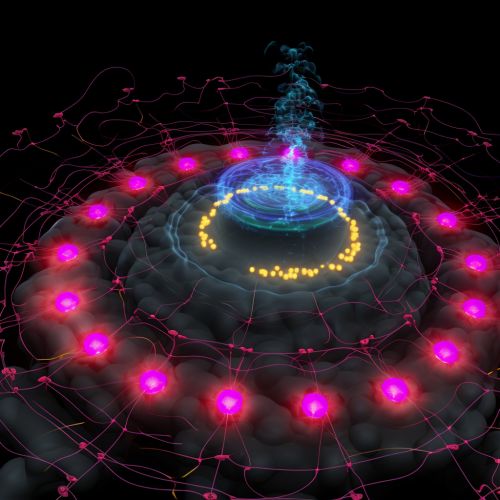Signal transduction
Introduction
Signal transduction is a fundamental process in biology that allows cells to respond to external cues and adapt their behavior accordingly. It involves the conversion of a signal from outside the cell to a functional change within the cell, a process that is essential for the survival and functioning of all living organisms Cell.
Molecular Mechanisms of Signal Transduction
Signal transduction begins with the recognition of a signal, or ligand, by a specific receptor on the cell surface. This interaction induces a conformational change in the receptor, which triggers a series of biochemical events inside the cell. These events often involve the activation of enzymes, the generation of second messengers, and the initiation of gene transcription Enzyme, Second Messenger System, Gene Transcription.


Receptors in Signal Transduction
Receptors are proteins that bind to specific ligands and initiate signal transduction. They are usually located on the cell surface, but can also be found inside the cell. There are several types of receptors, including G-protein coupled receptors, ion channel receptors, and enzyme-linked receptors G-Protein Coupled Receptors, Ion Channel Receptors, Enzyme-Linked Receptors.
Signal Transduction Pathways
There are many different signal transduction pathways, each of which is responsible for responding to different types of signals. Some of the most well-known pathways include the MAP kinase pathway, the PI3K/Akt pathway, and the JAK/STAT pathway MAP Kinase Pathway, PI3K/Akt Pathway, JAK/STAT Pathway.
Role of Signal Transduction in Health and Disease
Abnormalities in signal transduction can lead to a wide range of diseases, including cancer, diabetes, and autoimmune disorders. Understanding the molecular mechanisms of signal transduction is therefore crucial for the development of new therapeutic strategies Cancer, Diabetes, Autoimmune Disorders.
Conclusion
Signal transduction is a complex and highly regulated process that is essential for the survival and functioning of all living organisms. It involves the conversion of a signal from outside the cell to a functional change within the cell, a process that is mediated by a series of biochemical events. Understanding the molecular mechanisms of signal transduction is crucial for the development of new therapeutic strategies for a wide range of diseases.
